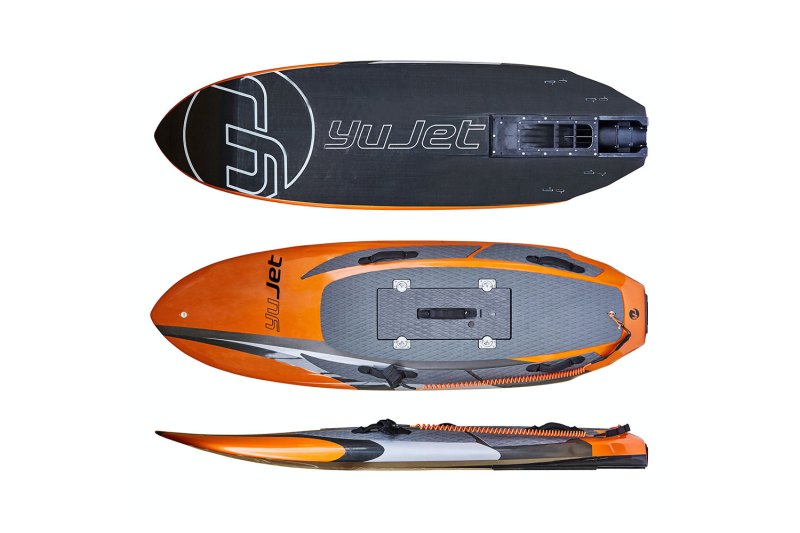Surfing is awesome. Paddling around aimlessly while praying for waves isn’t. Thanks to the wonders of modern technology, including better batteries and ultra-compact jet propulsion systems, surfers need to wait no more. A new breed of electric surfboards now makes it possible to surf almost anywhere there’s water — with or without waves.
Yujet’s aptly named Surfer is an electric jetboard that’s designed to be fast, fun, and easy for almost anyone to ride — even without prior surfing experience. With a top speed of 24 miles per hour, it sounds like a hell of a ride. The integrated, all-electric propulsion system uses an intelligent, 36mAH battery to deliver a 16 mile range or about 40 minutes of ride time. The battery charges in just two hours, but buying a separate backup means surfers are guaranteed little downtime.
Even though the Yujet stickers for less than $10,000, it offers a similar build quality to almost any other jetboard released in the last few years. A thick, carbon fiber construction means the board is lightweight and easy to maneuver. It also makes for rock-solid durability. The deck is coated with high-quality EVA foam that’s comfortable to stand on and grippy as well. Neoprene handles at all four corners also make the board easy to carry and serve as grab points when surfers need to climb back on the Surfer directly from the water. Plus, with the battery removed, the board weighs just 20 pounds, so it’s easy to wrangle from vehicle to shore and back again. The optional wheeled cart makes the process even easier.

Electric jetboards are, of course, nothing new. We’ve previously covered the curious Waydoo Flyer — an electric hydrofoil that rides almost like a surfboard. The Ravik electric surfboard from Sweden’s Awake is Yujet’s closest competitor. The high-performance Ravik boasts a top speed of almost 35 miles per hour and charges in less than 90 minutes. But, the €15,900 (roughly USD $18,000) price tag puts it well out of reach for most consumers. Buyers can now score a Yujet Surfer with a second battery and charger for substantially less.
The Surfer Electric Jetboard is available directly through Yujet for $9,999. That price includes everything you’ll need for a day on the water. In addition to the jetboard itself, buyers get a lithium-ion battery, an intelligent battery charger, and a wireless remote with charger, plus a safety magnet and leash to make sure the board can’t get too far away from you.



